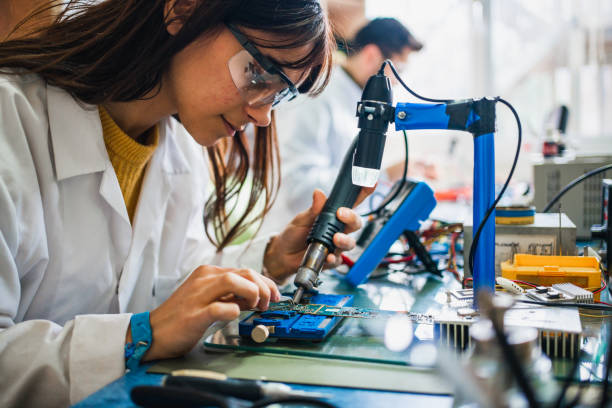Everyone wonders how the electronic devices around us work and impact our daily lives. Have you ever thought about building an electrical circuit or designing your own project? You might believe this is impractical, very difficult, or monopolized by certain companies. Though particularly for novices, electronics may look complicated, in reality it is an interesting world full of undiscovered possibilities.

Starting with the fundamental and necessary tools you must possess, we will lead you on an all-encompassing trip to start your electronics adventure in this essay. to advanced equipment for professionals and actual advice to steer clear of typical errors and speed your learning curve.
Reason Electronics is Important
Almost like creating magic, electronics is a world of unlimited possibilities. Learning electronics is vital as it powers everything from AI systems to cellphones.
- Develop your problem-solving and logical thinking skills
- Provide excellent career opportunities in an evolving job market
- Give you the ability to repair electronic devices instead of replacing them
- Open doors to innovation and creating your own projects
Basic Tools: Your Practical Start in Electronics
Experts confirm that you don't need a huge investment to start. Just three basic tools allow you to accomplish countless projects and experiments.
1. Breadboard: Your First Lab
A breadboard is the cornerstone of learning electronics. This plastic board filled with holes allows you to build temporary electrical circuits without soldering. Its operation relies on an internal wiring system:
- Horizontal rows (usually in groups of 5) are internally connected
- Long lines on the sides (red for power, blue for ground) are wired vertically
This makes connecting and testing circuits simple and fast. Practical tip: Start with a medium-sized breadboard (400–800 pins), suitable for most educational projects.
2. Arduino: The Brain of Electronic Projects
Arduino is a small programmable development board, widely used by beginners and professionals. Arduino allows you to control various components easily.
Why Arduino is ideal for beginners:
- Huge online support community with thousands of tutorials
- Simplified programming based on C++
- Compatible with most common electronic components
- Affordable, especially unofficial models
Choosing the right Arduino:
- Arduino Uno: Most popular for beginners
- Arduino Nano: Compact, suitable for small projects
- Arduino Mega: For more complex circuits
Learn more at the Arduino Official Site.
3. Multimeter: Your Circuit Detective
Measuring voltage, current, resistance, and conductivity calls for a multimeter. A multimeter lets you rapidly diagnose a circuit that is not operating as expected.
Basic functions:
- DC and AC Voltage Measurement
- Current Measurement
- Resistance Measurement
- Conductivity Testing
Buying tip: Basic digital multimeters under $30 are perfect for beginners. Check options at Amazon Multimeters.
Other Elements for a Whole Toolset
- Male-to- Male jump wires for breadboard connections.
- Power sources: holders for 9V batteries; 5V adapters
- starter electronics kit: push buttons, potentiometers, multicolor LEDs, capacitors, resistors (10Ω–10MΩ), rudimentary sensors (temperature, light, motion)
Theoretical Knowledge: Your Essential Foundation
Understanding basic theory will save hours of frustration:
- Ohm's Law: V = I × R
- Circuit Types: Series (current constant, resistance sums up), Parallel (voltage constant, resistance less than smallest resistor)
- Power: P = V × I
Learning tips:
- Begin with straightforward circuits like LED lights and little motors.
- Use simulation tools like Tinkercad Circuits
- Follow step-by-step tutorials from online platforms and instructors
Intermediate and Advanced Tools
Once you have become proficient in the basics, move up to more sophisticated tools:
1. Soldering Tools
- Soldering Iron: 40–60 Watts with adjustable temperature
- Desoldering Pump
- Flux
- Board Holder
2. Printed Circuit Boards (PCBs)
- Perfboard for small circuits
- Custom PCBs via KiCad
3. Advanced Measurement Equipment
- Adjustable Power Supply
- Oscilloscope
- Function Generator
Professional Advice: Useful Tips
- Patience: Electronics calls for accuracy; errors help in learning.
- Organization: Use small drawers with boxes for components.
- Safety: Wear goggles, prevent weariness, and disconnect power before changes.
- Documentation: Record experiments, circuits, and lessons in a notebook.
- Community: Join electronics forums, social media groups, and hobbyist clubs for help from your community.
Electronics is a creative and problem-solving path. Given the appropriate tools, knowledge, and attitude, anyone can advance from novice to expert. Start experimenting today and open the unlimited potential of electronics.
